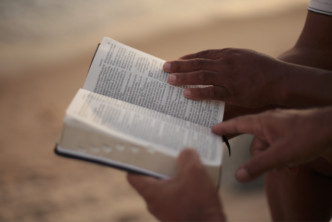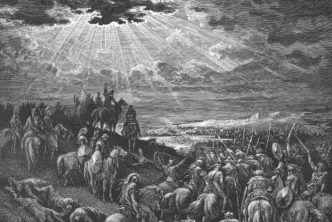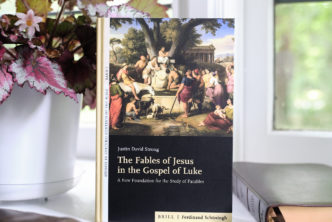I am notoriously disorganized and undisciplined. I tend to move from thing to thing only as I am inspired to do so. I am not good at putting limits and structure on myself. And yet, Graduate School is something that demands this. It’s a little easier when you are in In-Resident student with a certain rhythm and flow to your weekly schedule, so for my one year in this situation, I was able to get by…barely.
But now I am in a distance program, with no inherent structure to hold my hand week-by-week. After a class or two of barely keeping up and running myself ragged, I decided something needed to change. And so, I started making weekly Agendas for each of my semesters.
They are pretty simple, and they are also a great example of how technology can help us in seminary. But if you’re anything like me, you get tired of people saying “Do so-and-so to be organized!” without every giving you actual, real-world examples and helps. So that’s what I want to do today. Here is what my Agenda looks like in my favorite organizational tool, Evernote:
Two things I want to point out first: I group my Agendas by week, not class; and I group my Agendas together on their own in their own section. In other words, I don’t have a separate Agenda per class, nor do I throw in my Agendas into the folder in which I organize my class stuff. In my mind, they need to be in their own space, else I’ll start neglecting some classes, depending on where my Agenda sits.
Also, like I said, I have found it more helpful to put group it by week not class. I tried for a little bit to have a semester long Agenda for each class, but I easily lost track of everything. You want to treat all your classes equally and organize them in a way that you can get an overview of all of them quickly and easily, without having to jump to different files.
Next, you need to have checkboxes, strikethroughs, or some way to indicate when you have finished something without taking it off the list entirely. Not only is this efficient, but psychologically, it keeps you encouraged as you see more and more things finished. You also don’t want to delete the item entirely. It’s helpful later on during study time to have an exact record of each thing you did, and when.
If you look at the picture again, in my list of weekly Agendas, you’ll see some of them with an asterisk (*) at the front of the note title. For me, this is to let me know which ones I have completed entirely. Let’s face it, the class can move on even before you’re done with a particular reading or next step of a larger assignment. As this goes on, it’s helpful to see what’s not yet finished completely.
I also want to encourage you to use a digital program or app rather than paper and pen and post-it notes for this. This has a bunch of advantages. First, you can edit on the fly without needing to cross-out, re-write, etc. Second, you can carry your To-Do list with you on your phone (see picture). This helps you not lose it. And lastly, most digital programs can let you attach files, pictures, sounds, or links to your Agenda. So, often, I’ll attach the actual PDF files I need to read to the note, so it can be synced to the cloud and I know I won’t be without it.
 The last tip have to do with the structure of your actual Agenda. I have found it helpful to include the week’s main focus or topic above the agenda items, so I know what main things I need to hold onto. Also, bracketing off and bolding the action associated with the task has been extremely useful. I can prepare my mind for the series of things I have to “hear”, “watch”, “read”, “discuss”, “prepare”, “memorize”, “write”, etc. Seeing this all at once prepares your mind for the week ahead.
The last tip have to do with the structure of your actual Agenda. I have found it helpful to include the week’s main focus or topic above the agenda items, so I know what main things I need to hold onto. Also, bracketing off and bolding the action associated with the task has been extremely useful. I can prepare my mind for the series of things I have to “hear”, “watch”, “read”, “discuss”, “prepare”, “memorize”, “write”, etc. Seeing this all at once prepares your mind for the week ahead.
Next, I order the items by the flow of a given week. In my distance program, typically, there’s an audio portion that frames the readings for the week. Then there’s the readings themselves. And then there’s message board posts based on the readings. This is the order of things, and so it’s the order I post them. Also, I make sure at the end to put not only the next big assignment due in the weeks ahead, but one step I can do during this week towards completing it.
I hope this is helpful to you as you move forward in organizing your seminary courses. Let me know how this does or does not help you! For your convenience, here are some templates for some frequent ways people might employ this method. Good luck!





